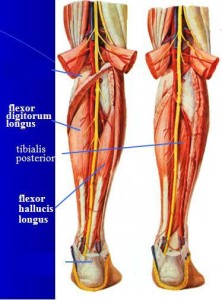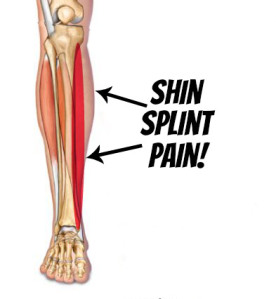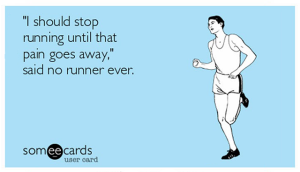 Medial tibial stress syndrome (MTSS), previously known as shin splints, is one of the most common injuries among runners. A whopping 10-20% of runners will experience MTSS. MTSS presents as a diffuse pain along the inside border of the shin (tibia), typically in the lower 4-6cm. Most commonly, the pain is caused by overuse or repetitive strain of a combination of three muscles: soleus, tibialis posterior, and flexor digitorum longus. These muscles all have attachment points along the medial/inner border of the tibia – when they are chronically strained they begin to pull away and inflammation is created; this leads to pain and weakness.
Medial tibial stress syndrome (MTSS), previously known as shin splints, is one of the most common injuries among runners. A whopping 10-20% of runners will experience MTSS. MTSS presents as a diffuse pain along the inside border of the shin (tibia), typically in the lower 4-6cm. Most commonly, the pain is caused by overuse or repetitive strain of a combination of three muscles: soleus, tibialis posterior, and flexor digitorum longus. These muscles all have attachment points along the medial/inner border of the tibia – when they are chronically strained they begin to pull away and inflammation is created; this leads to pain and weakness.
It is important to distinguish MTSS from a stress fracture of the tibia as well as from chronic exertional compartment syndrome. Typically, pain felt from a stress fracture is more focal while pain from MTSS is described as diffuse. When in doubt a radiograph may help to identify a stress fracture. It is possible that stress fractures may not appear on xray in which case a bone scan is more sensitive. Chronic exertional compartment syndrome is a vascular condition that occurs during exercise. The pressure in the lower leg increases to such extremes that the muscles become deprived of blood and oxygen. This results in sensations of extreme tightness and burning.
MTSS typically presents as palpable pain along the medial/inner border of the lower 1/3 of the tibia. This pain may be aggravated by passive stretching of the soleus, performing heel raises or single leg hops. A vascular and neurological assessment would be normal.
No single cause of MTSS has ever been identified, but risk factors include:
o Abrupt increase in training (VERY common for runners)
 o Increased pronation
o Increased pronation
o Increased strength of plantar flexors – the muscles that allow us to point our toes
o Inadequate calcium intake
o Hard or inclined running surfaces
o Inadequate shoes
o Previous injuries
Treatment optio ns for MTSS include the dreaded ‘r’ word: rest – let’s call it activity modification, stretching, strengthening, and manual therapy including ART® and acupuncture. As always, the best option is prevention! Take a good look at the risk factors above – most of them are easily modifiable! If you need assistance with any of the modifications ask your health professional – we’re always happy to help!
ns for MTSS include the dreaded ‘r’ word: rest – let’s call it activity modification, stretching, strengthening, and manual therapy including ART® and acupuncture. As always, the best option is prevention! Take a good look at the risk factors above – most of them are easily modifiable! If you need assistance with any of the modifications ask your health professional – we’re always happy to help!
Dr. Julia Callaghan, Chiropractor,
ART ®, CSCS, Acupuncture
References:
Thistle, S. (July 2009). Medial Tibial Stress Syndrome – Contributing Factors. Retrieved from: www.researchreviewservice.com
Maguire, G. (May 2010). Shockwave Therapy for Chronic Medial Tibial Stress Syndrome. Retrieved from: www.researchreviewservice.com
Muir, J. (October 2013). Medial Tibial Stress Syndrome: Diagnostic Tests, Risks & Prognostic Factors. Retrieved from: www.researchreviewservice.com

